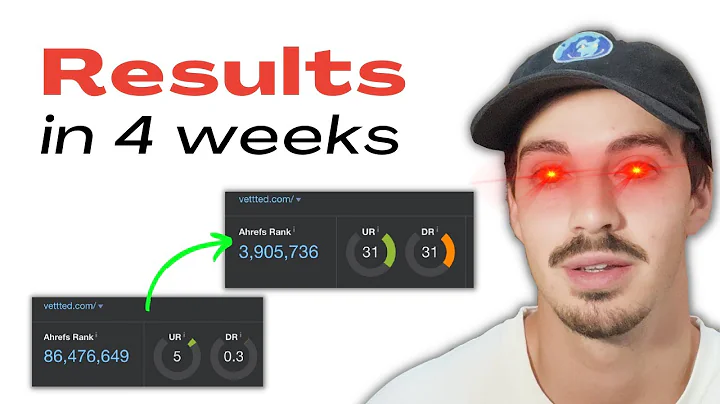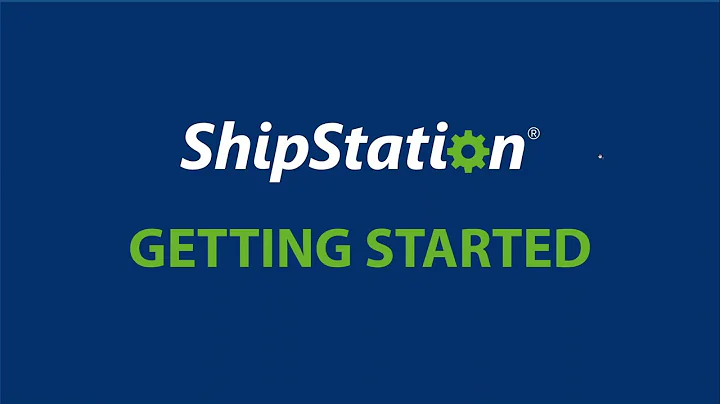Streamline Shipping Process with USPS Calculated Rates
Table of Contents:
- Introduction
- Setting up Products for Automatic Calculated Shipping
2.1 Prepping your Products
2.2 Updating Weight Values
2.3 Applying Weight to All Variants
- Setting up Location
- The Difference Between Drop shippers and Private Suppliers
4.1 Drop shippers
4.2 Private Suppliers
- Setting up PO Box
- Adding Locations
- Managing Shipping and Delivery
7.1 Creating Zones
7.2 Adding Rates
7.3 Understanding Carrier App and Discounted Prices
- Handling Fees
- Pros and Cons of Using USPS Calculated Carrier Rates
- Conclusion
Setting up USPS Automatic Calculated Carrier Rates
In this article, we will discuss how to set up automatic calculated carrier rates with USPS, specifically tailored for those located in the US. If you have a Shopify store and want to avoid guessing the shipping costs for your products, this guide will walk you through the process step by step.
1. Introduction
Shipping products from your store to clients can be a complex task, especially when it comes to determining the exact cost based on USPS rates. In this article, we will explore how to leverage the USPS automatic calculated carrier rates system to eliminate the guesswork and ensure accurate shipping calculations.
2. Setting up Products for Automatic Calculated Shipping
2.1 Prepping Your Products
Before diving into the setup process, it is essential to prepare your products accordingly. Depending on the type of products you sell, you need to consider their weight and packaging requirements. For example, if you sell clothing items like t-shirts, you may not require a heavy box for shipping. Start by accessing the "Products" section in Shopify and proceed to update the weight values.
2.2 Updating Weight Values
Within the product variant edit screen, scroll down to the shipping section. Here, you can update the weight values for different variants of your product. It is crucial to consider the weight of the product alone and the additional weight once it is packaged. Be cautious to avoid misweighting the item, as it may result in additional charges from USPS.
2.3 Applying Weight to All Variants
To streamline the process, ensure you apply the weight to all variants of the product. Rather than updating each variant individually, use the "Apply weight to all variants" option. This will save you time and ensure consistency across all products.
3. Setting up Location
Determining the location of your products is crucial for accurate shipping calculations. If you ship products from your home or a local facility, it is advisable to set up a PO Box instead of using your home address. Acquire a PO Box from your local post office and input its address in the Shopify "Location" settings.
4. The Difference Between Drop Shippers and Private Suppliers
Before proceeding further, it is essential to understand the distinction between drop shippers and private suppliers.
4.1 Drop Shippers
Drop shippers are businesses that connect with public vendors to sell products in their store without initial inventory investment. When customers purchase from a drop shipper, the order is placed with the vendor, who handles the shipping process. If you are a drop shipper, this guide may not be suitable for your needs.
4.2 Private Suppliers
Private suppliers, on the other hand, are businesses that purchase inventory in bulk from private suppliers and handle the shipping process themselves. If you fall into this category, continue reading to learn how to set up USPS automatic calculated carrier rates.
5. Setting up PO Box
To ensure privacy and security, it is highly recommended to acquire a PO Box for shipping purposes. Visit your local post office or the USPS website to obtain a PO Box. With a PO Box, you can input its address as the location for your products.
6. Adding Locations
After securing a PO Box, add it as a location in Shopify's settings. This step will ensure that orders are dispatched from the dedicated post office location rather than your home address. By doing this, you maintain privacy, and any returns or dispatches are directed to the post office.
7. Managing Shipping and Delivery
Now, let's delve into the process of managing shipping and delivery settings on your Shopify store.
7.1 Creating Zones
In the "Shipping" section, click on "Manage" to set up shipping zones. Begin by deleting default zones and focus on creating a domestic zone, as this article focuses on USPS rates within the US.
7.2 Adding Rates
To calculate shipping rates, you have two options – using a carrier app or Shopify's discounted prices. Research USPS rates and consider testing different options to understand which one suits your business best. Calculate based on weight, shape, size, and the specific USPS service you intend to use.
7.3 Understanding Carrier App and Discounted Prices
The carrier app option allows you to leverage Shopify's partnerships with carriers like USPS. This approach provides discounted rates and easy label purchasing directly from Shopify. Alternatively, you can use your own USPS account, but ensure you explore the benefits and drawbacks of each method before making a decision.
8. Handling Fees
Consider adding a handling fee to cover any additional costs associated with packaging and processing orders. While USPS provides shipping rates, it is essential to make sure your business expenses are adequately covered. Determine a reasonable handling fee to ensure profitability without discouraging customers.
9. Pros and Cons of Using USPS Calculated Carrier Rates
Pros:
- Accurate shipping cost calculations
- Streamlined shipping process
- Possibility of using discounted rates
- Secure and reliable USPS services
Cons:
- Additional handling fees may deter some customers
- Setup and configuration can be time-consuming
- Limited to USPS carriers only
10. Conclusion
Setting up USPS automatic calculated carrier rates for your Shopify store allows you to provide accurate shipping costs to your customers. By following the steps outlined in this article, you can streamline your shipping process and avoid the guesswork associated with USPS rates. Take advantage of the features and benefits offered by USPS to enhance your customer experience and grow your business.
Highlights:
- Eliminate guesswork with USPS automatic calculated carrier rates
- Prepare your products by updating weight values
- Set up a secure PO Box to protect your privacy
- Configure shipping zones and rates based on USPS options
- Consider adding a handling fee to cover additional costs
- Understand the pros and cons of using USPS calculated carrier rates
- Streamline your shipping process for a better customer experience
FAQ:
Q: Can I use USPS automatic calculated carrier rates for international shipping?
A: Yes, USPS offers international shipping options. However, this article primarily focuses on domestic rates within the US.
Q: Are there any additional fees involved in using USPS calculated carrier rates?
A: While USPS rates are provided, it is important to account for any handling fees you may charge to cover packaging and processing costs.
Q: Can I use carriers other than USPS with automatic calculated carrier rates?
A: This article focuses on USPS since it is commonly used and integrated with Shopify. However, you can explore other carrier options available through Shopify's carrier app feature.
Q: Will adding a handling fee discourage customers from making purchases?
A: It is crucial to strike a balance when adding a handling fee. Consider the additional costs involved and set a reasonable fee that does not significantly impact customer willingness to complete a purchase.
Q: How long does it take to set up USPS automatic calculated carrier rates?
A: The setup process may vary depending on the complexity of your products and shipping requirements. Plan for sufficient time to configure the necessary settings accurately.
Q: Can I use USPS calculated carrier rates if I am a drop shipper?
A: This article is more suitable for private suppliers who handle shipping themselves. Drop shippers typically rely on vendors for shipping, making this guide less applicable to their needs.






















